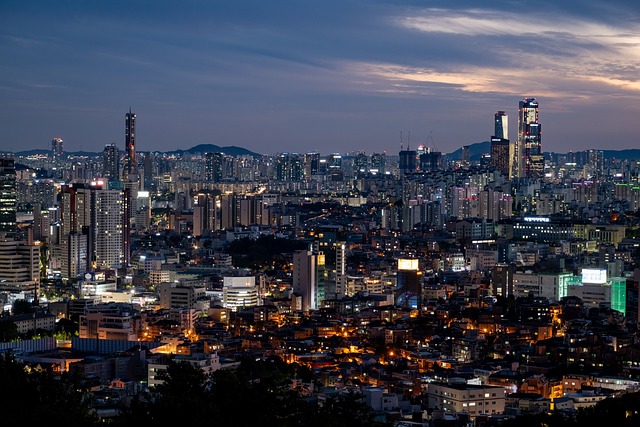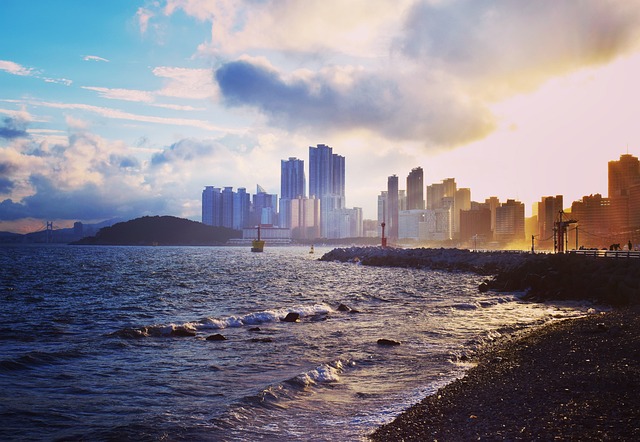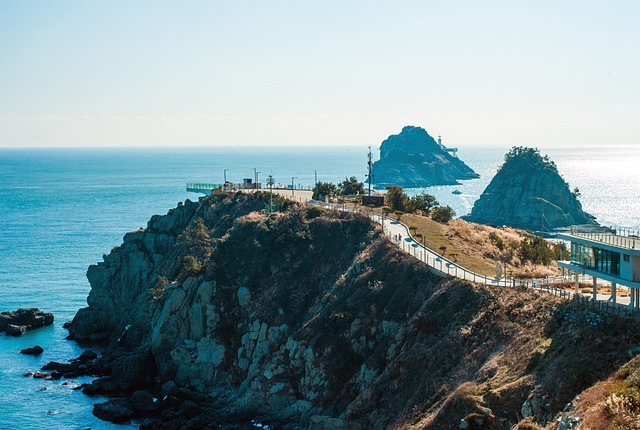As the bustling streets of Seoul welcomed me with a symphony of sights and sounds, I knew that my journey from Seoul to Busan would be nothing short of extraordinary. But little did I anticipate the kaleidoscope of experiences that awaited me along the way.
Picture this: it was a crisp morning in Seoul, the air filled with the tantalizing aroma of sizzling street food and the gentle hum of commuters making their way to work. Amidst this vibrant tapestry, I found myself embarking on a journey that would not only traverse the geographical expanse of South Korea but also unravel the rich tapestry of its culture and heritage.
The purpose of my trip? It was twofold: to satiate my wanderlust and delve deeper into the soul of Korea. And what better way to do so than by traversing the country from its bustling capital to its coastal gem, Busan?
From the towering skyscrapers of Seoul to the tranquil shores of Busan, my journey promised to be a captivating odyssey filled with moments of awe, discovery, and serendipity. But beyond the mere act of traversing distances, I was driven by a desire to uncover the hidden gems, the lesser-known treasures that lay scattered along the path less traveled.
In the pages that follow, dear reader, you can expect to accompany me on this remarkable voyage. Together, we’ll explore the labyrinthine streets of Seoul, traverse verdant landscapes, and soak in the coastal charm of Busan. But more than just a travelogue, this article aims to be a window into the heart and soul of Korea—a testament to its beauty, resilience, and boundless hospitality.
So buckle up, dear reader, for an adventure awaits—one that promises to leave an indelible imprint on your heart and soul.
▶Let’s take a slow walk in Korea : Welcome to Korea
▶‘Gyeongju: A time travel where past and present coexist’
Getting Started: Exploring Seoul

As I stepped off the plane and into the bustling streets of Seoul, I was immediately enveloped in a whirlwind of energy and excitement. The city seemed to pulse with life, its streets teeming with a kaleidoscope of colors, sounds, and aromas. From the towering skyscrapers that pierced the sky to the narrow alleyways lined with traditional hanok houses, Seoul was a juxtaposition of the old and the new—a city where ancient traditions coexisted harmoniously with modern innovation.
My first impressions of Seoul were nothing short of awe-inspiring. Everywhere I turned, there was something new to discover, whether it was the historic palaces that stood as silent sentinels to Korea’s storied past or the bustling markets where vendors hawked their wares with infectious enthusiasm.
As I set out to explore the city, I found myself drawn to its rich tapestry of historical sites, each one offering a glimpse into Korea’s illustrious past. From the majestic Gyeongbokgung Palace, with its ornate architecture and sprawling gardens, to the serene Changdeokgung Palace, a UNESCO World Heritage Site steeped in centuries of history, Seoul was a treasure trove of cultural heritage waiting to be uncovered.
But Seoul was more than just its historical landmarks—it was a city of vibrant neighborhoods, each one with its own unique charm and character. From the trendy streets of Gangnam, where fashionistas strutted their stuff amidst designer boutiques and chic cafes, to the bohemian enclave of Hongdae, alive with the sounds of street performers and the aroma of freshly brewed coffee, Seoul was a melting pot of culture and creativity.
And of course, no trip to Seoul would be complete without indulging in its world-renowned cuisine. From piping hot bowls of kimchi jjigae to crispy, golden fried chicken, the city’s culinary offerings were as diverse as they were delicious. But perhaps my most memorable culinary experience in Seoul was stumbling upon a humble street food stall tucked away in a quiet alley, where an elderly couple served up the most mouthwatering mandu I had ever tasted. As I savored each bite, I couldn’t help but marvel at the warmth and hospitality of the Korean people—a warmth that would stay with me long after I left Seoul behind.
In Seoul, every corner turned revealed a new adventure, a new discovery waiting to be made. And as I bid farewell to this vibrant city and set my sights on the next leg of my journey, I knew that Seoul had left an indelible mark on my heart—a mark that would beckon me back time and time again.
The journey begins: Travel from Seoul to Busan

Embarking on the journey from Seoul to Busan is an adventure in itself, offering travelers a myriad of transportation options to choose from. Whether you prefer the speed and convenience of air travel or the scenic charm of train or bus journeys, there’s a mode of transportation to suit every traveler’s preference and budget.
- Train: One of the most popular ways to travel from Seoul to Busan is by train, thanks to South Korea’s efficient and extensive railway network. The KTX (Korea Train eXpress) high-speed train offers swift and comfortable journeys between the two cities, with travel times averaging around 2.5 to 3 hours. The KTX trains boast modern amenities, including spacious seating, onboard dining options, and complimentary Wi-Fi, making them an ideal choice for travelers looking to maximize their time and comfort.
- Bus: For travelers seeking a more budget-friendly option or a chance to take in the scenic countryside vistas, buses provide a convenient alternative to trains. Several bus companies operate regular services between Seoul and Busan, offering varying levels of comfort and amenities. Express buses offer faster travel times, typically around 4 to 5 hours, while standard buses may take slightly longer but are often more affordable. Travelers can choose from various departure points within Seoul, including major bus terminals such as Dongseoul Bus Terminal and Express Bus Terminal.
- Plane: If time is of the essence or you simply prefer the convenience of air travel, flying from Seoul to Busan is a swift and hassle-free option. Several domestic airlines operate frequent flights between Seoul’s Gimpo International Airport and Busan’s Gimhae International Airport, with flight times averaging around 1 hour. While air travel may be the quickest option, it’s essential to factor in travel time to and from the airports, as well as potential delays due to security checks and boarding procedures.
For my journey from Seoul to Busan, I opted for the KTX high-speed train for its combination of speed, comfort, and convenience. The allure of whizzing past verdant landscapes at speeds of up to 300 km/h while enjoying panoramic views from the comfort of my seat was simply irresistible. Additionally, the centrally located Seoul and Busan train stations made it easy to access other parts of the city upon arrival.
For fellow travelers embarking on this journey, here are a few tips to enhance your experience:
- Book in Advance: Especially during peak travel seasons, it’s advisable to book train or bus tickets in advance to secure your preferred departure time and seating options.
- Pack Essentials: Whether you’re traveling by train, bus, or plane, be sure to pack essentials such as snacks, water, entertainment (books, music, etc.), and any necessary travel documents.
- Stay Informed: Keep an eye on weather forecasts and any potential travel advisories or disruptions that may affect your journey.
- Arrive Early: For train or plane travel, arrive at the station or airport with ample time to spare to allow for check-in, security procedures, and boarding.
With these tips in mind, travelers can embark on their journey from Seoul to Busan with confidence, ready to immerse themselves in the wonders that await in Korea’s coastal gem.
Pit stops and detours: exploration along the way

As I embarked on my journey from Seoul to Busan, I couldn’t resist the allure of exploring the hidden gems and off-the-beaten-path treasures that lay scattered along the way. From quaint villages steeped in history to picturesque natural wonders, each pit stop and detour offered a glimpse into the rich tapestry of Korean culture and heritage.
One such stop that captured my imagination was the ancient city of Gyeongju, often referred to as the “museum without walls” for its wealth of archaeological sites and cultural landmarks. Nestled amidst rolling hills and verdant countryside, Gyeongju served as the capital of the ancient kingdom of Silla for over a thousand years, leaving behind a legacy of grand palaces, towering pagodas, and intricate stone carvings.
Exploring Gyeongju felt like stepping back in time, with each cobblestone alleyway and weathered stone monument whispering tales of bygone eras. I found myself wandering through the tranquil grounds of Bulguksa Temple, a UNESCO World Heritage Site renowned for its exquisite architecture and serene beauty. As I marveled at the intricately carved wooden eaves and ornate stone pagodas, I couldn’t help but feel a sense of reverence for the centuries of devotion and craftsmanship that had gone into its creation.
Another highlight of my journey was a serendipitous encounter with a local artisan in the rural village of Hahoe. Tucked away amidst verdant rice paddies and swaying reeds, Hahoe is renowned for its traditional mask dance, a vibrant cultural tradition that dates back centuries. Intrigued by the intricate wooden masks adorning the walls of a quaint workshop, I struck up a conversation with the artisan behind them, who graciously invited me to try my hand at carving my own mask.
As I clumsily wielded the chisel under his patient guidance, I couldn’t help but marvel at the artistry and skill that went into crafting each intricately detailed mask. Through broken words and shared laughter, we bridged the gap of language and culture, forging a fleeting but meaningful connection that would stay with me long after I left Hahoe behind.
But perhaps the most memorable aspect of my journey was the warm hospitality and generosity of the Korean people I encountered along the way. From the cheerful street vendors who shared their culinary delights with curious travelers to the kind-hearted locals who offered directions and recommendations with a smile, it was these fleeting moments of human connection that truly made my journey from Seoul to Busan unforgettable.
In the end, it wasn’t just the destinations themselves that left an indelible imprint on my heart, but the journey—the unexpected detours, chance encounters, and moments of shared laughter—that made the experience truly magical.
Arrival in Busan: City of the Sea

Arriving in Busan felt like stepping into a different world altogether—a world where the rhythms of life were dictated by the ebb and flow of the sea, and where towering skyscrapers gave way to sandy beaches and emerald waters. As my train pulled into Busan Station, I was greeted by the salty tang of the ocean breeze and the distant sound of seagulls circling overhead. It was a stark contrast to the bustling metropolis of Seoul, yet equally enchanting in its own right.
My first impressions of Busan were nothing short of mesmerizing. The city exuded a laid-back charm, with its sun-kissed beaches, bustling markets, and eclectic mix of modern architecture and traditional temples. As I ventured into the heart of the city, I found myself drawn to its vibrant energy and warm hospitality, which seemed to permeate every corner and alleyway.
One of the must-see attractions in Busan is Haeundae Beach, a pristine stretch of golden sand that stretches for miles along the city’s coastline. Here, locals and tourists alike flock to soak up the sun, take a dip in the azure waters, or indulge in a leisurely stroll along the bustling boardwalk. The beach is also home to an array of beachfront cafes, restaurants, and bars, where visitors can enjoy fresh seafood and refreshing beverages while taking in the breathtaking ocean views.
Another iconic landmark in Busan is the bustling Jagalchi Fish Market, the largest fish market in Korea and a feast for the senses. Here, vendors hawk their fresh catches of the day, from plump shrimp and succulent crab to exotic varieties of fish and shellfish. Visitors can wander through the labyrinthine stalls, marveling at the array of seafood on display, or sample local delicacies at one of the market’s many eateries.
But perhaps what sets Busan apart from Seoul is its deep connection to the sea—a connection that is palpable in every aspect of life in the city. From the bustling fish markets and bustling beaches to the serene temples and shrines that dot the coastline, the sea permeates every facet of Busan’s culture and identity. It’s a city where the rhythm of life is dictated by the tides, where the salty sea air infuses every breath, and where the ocean serves as both a source of sustenance and a symbol of resilience.
As I explored the winding streets and hidden alleyways of Busan, I couldn’t help but be captivated by its unique blend of natural beauty, cultural heritage, and modern charm. It was a city unlike any other—a city of the sea, where the horizon stretched endlessly before me, promising new adventures and discoveries at every turn.
Reflections and Recommendations: Lessons Learned and Tips for Readers
As I reflect on my journey from Seoul to Busan, I’m filled with a profound sense of gratitude for the experiences, encounters, and memories that have enriched my travels. From the bustling streets of Seoul to the tranquil shores of Busan, each step of the journey was a testament to the beauty, resilience, and hospitality of the Korean people and their culture.
One of the most valuable lessons I learned during my travels was the importance of embracing the unexpected and allowing myself to veer off the beaten path. While it’s easy to get caught up in ticking off the must-see attractions and following a rigid itinerary, some of my most memorable moments came from spontaneous detours and chance encounters with locals. Whether it was stumbling upon a hidden temple nestled amidst the mountains or striking up a conversation with a street vendor selling the most delicious snacks, these serendipitous moments added depth and richness to my journey, reminding me to approach travel with an open heart and mind.
Another insight that emerged from my travels was the power of human connection to transcend language and cultural barriers. Despite the differences in language, customs, and traditions, I found that kindness, warmth, and hospitality were universal languages that transcended borders. From the elderly couple who shared their home-cooked meal with me to the artisan who patiently taught me the art of mask carving, these fleeting yet meaningful connections served as a reminder of the beauty of human connection and the importance of fostering empathy and understanding in an increasingly interconnected world.
For readers planning a similar trip from Seoul to Busan, here are a few practical tips and recommendations to enhance your experience:
- Embrace Flexibility: While it’s essential to have a rough itinerary in mind, don’t be afraid to deviate from your plans and explore off-the-beaten-path destinations or activities.
- Interact with Locals: Take the time to engage with locals, whether it’s striking up a conversation with a shopkeeper or joining a cultural workshop. You’ll gain valuable insights into local life and culture while forging meaningful connections along the way.
- Pack Light and Stay Comfortable: Opt for lightweight, versatile clothing and comfortable footwear to navigate the diverse landscapes and climates of Korea with ease.
- Stay Connected: Invest in a portable Wi-Fi device or local SIM card to stay connected while on the go, making it easier to navigate, communicate, and access essential information.
- Try New Things: Don’t be afraid to step out of your comfort zone and try new foods, activities, and experiences. Whether it’s sampling street food at a bustling market or embarking on a scenic hike, embracing new experiences is an integral part of the travel journey.
Above all, remember to savor every moment of your journey from Seoul to Busan, for it’s not just about the destinations you visit but the experiences, connections, and memories you make along the way that truly enrich the travel experience.
